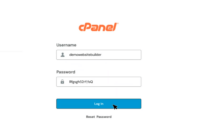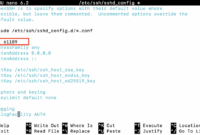
ServerPilot simplifies server management by automating the setup and security of PHP, MySQL, and Nginx on Ubuntu cloud servers. However, you might need to uninstall it to migrate to a different tool or manage your server manually.
This guide provides a step-by-step walkthrough on how to safely uninstall ServerPilot from your Ubuntu server.
Let’s begin!
Step 1: Prioritize Data Backup
Backing up your data is paramount before uninstalling ServerPilot. Server changes, especially software uninstallation, have the potential for data loss. Ensure you have recent backups of all crucial data, including website files, databases, and custom configuration files.
1.1: Website File Backup
Your website files encompass the core CMS files (e.g., WordPress, Joomla, Drupal), themes, plugins, and media uploads.
Using rsync:
rsync is a file-copying tool designed for speed and versatility. It excels at syncing files between locations, efficiently transferring only the modified portions of files.
Example:
rsync -avz /var/www/html/ /backup/location/html/
Here, `a` signifies archive mode, `v` enables verbose output, and `z` enables compression. `/var/www/html/` is the standard web files directory; however, your setup might differ.
Using tar:
tar is a utility for merging multiple files into a single archive. It’s useful to create a combined backup of an entire website directory.
Example:
tar -czvf /backup/location/website_backup.tar.gz /var/www/html/
In this case, `c` instructs tar to create a new archive, `z` compresses the archive using gzip, `v` enables verbose output, and `f` lets you define the output filename.
1.2: Database Backup
Databases contain dynamic website content, such as posts, comments, and user accounts. It’s important to back these up separately from web files.
Using mysqldump:
mysqldump comes with MySQL/MariaDB and is used to back up databases.
Example for individual database backup:
mysqldump -u [username] -p[password] [database_name] > /backup/location/database_name.sql
To backup all databases:
mysqldump -u [username] -p[password] --all-databases > /backup/location/all_databases.sql
Replace `[username]`, `[password]`, and `[database_name]` with your actual MySQL/MariaDB credentials and database name.
1.3: Configuration File Backup
Configuration files store settings for your server and linked web services (Apache, Nginx, and PHP are common examples.)
Example for backing up Apache configuration:
cp /etc/apache2/apache2.conf /backup/location/
Always store backups at a secure, accessible location, preferably off-site or on a separate server to protect data integrity in case of server issues.
Step 2: Stop ServerPilot-Managed Services
Before uninstalling, stop all services controlled by ServerPilot.
sudo service nginx stop sudo service apache2 stop sudo service php7.4-fpm stop
**Note:** Adjust `php7.4-fpm` to match your installed PHP version.
Step 3: Remove ServerPilot Packages
Remove the packages installed by ServerPilot.
sudo apt-get purge nginx apache2 php* mysql*
Step 4: Remove ServerPilot User and Directories
ServerPilot creates a ‘serverpilot’ user. Remove this user and their associated directories.
sudo userdel -r serverpilot sudo rm -rf /srv/users/
Step 5: Cleanup Dependencies and Files
To remove remaining ServerPilot-related dependencies and configuration files:
sudo apt-get autoremove sudo apt-get autoclean
Then, manually inspect and delete any remaining configuration files.
Commands Used
- rsync – For fast file transfer and synchronization.
- tar – For archiving files.
- mysqldump – For database backups.
- apt-get – APT package management tool.
FAQ
-
Why might someone uninstall ServerPilot?
Possible reasons include switching to a different server management solution, managing their server manually, or experiencing compatibility problems with specific applications.
-
Is it safe to uninstall ServerPilot?
Yes, if you create a complete backup beforehand. This enables restoring your server to its previous state if any issues arise.
-
Will website downtime occur during uninstallation?
Yes, your websites will likely experience temporary downtime during the process. It is best to notify your users beforehand.
-
Can I reinstall ServerPilot at a later time?
Yes, you can reinstall ServerPilot whenever you want; just follow the official installation guide.
-
What are alternatives to ServerPilot?
Alternatives include RunCloud, Forge, and Ploi. Each has its own set of features and pricing; select one that suits your individual needs.
Conclusion
Uninstalling ServerPilot from your Ubuntu server is a straightforward procedure, but proceeding cautiously is advised. Always backup data and configurations before making significant server changes.
If seeking alternatives after uninstalling ServerPilot, explore dedicated server hosting or VPS server hosting. Select the option that most aligns with your requirements and technical proficiency.
Comments are welcome.

